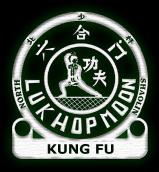
Liu Dekuan: bagua taijiquan


|
Liu Dekuan: bagua taijiquan |

|
There is a style of Taijiquan, called Bagua Taijiquan! The current holder of the system is Guo Zhushan, the third generation master of Baguazhang. The style has become a hit in Jinan (capital of North China Shandong Province) and Tianjin. Although the style was transmitted within Bagua tradition, it actually belongs to the Taijiquan family. Bagua Taijiquan comes from Yang Family Boxing:1. Yang Luchan passed it on to Xia Guoxun, 2. Xia taught Liu Dekuan (nicknamed "Big Spear Liu"), 3. Liu then taught Cheng Haiting (Cheng Tinghua's oldest son), 4. who passed it to Guo Zhushan (disciple of Cheng Tinghua & Li Cunyi) and Jiang Xinshan. It is said that Xia Guoxun was Yang Luchan's son-in-law, so "he must have received true transmission". Xia and Liu Dekuan were sworn blood-brothers. Liu, Cheng Tinghua and Li Cunyi were also sworn blood-brothers through traditional Jinlan ceremony. Because of these close relations Bagua Taijiquan is said to hold close to the original appearance of taijiquan.
Since Guo Zhushan and Cheng Haiting were kungfu brothers and very skillful Bagua practitioners, they put added in some Bagua movements, kicks, etc. The Bagua Taijiquan that is known today has been researched and developed by Guo Zhushan, who then passed it to Zhang Wanying, Jing Dewai, Qiao Hongru and others.
Guo Zhushan was born in Tianjin in 1901 to a wealthy factory owner, Guo Tiancheng, who often invited famous masters to perform at their estate. Masters like Li Cunyi, Liu Dekuan, Zhang Zhankui, Li Kuiyuan and others were frequent guests. One famous Bagua master, Cheng Haiting (also called Cheng Youlong) ended up staying on the estate for over ten years at Guo's house and had created such a bond with Guo, that they were as brothers. Guo became Li Cunyi's official disciple at the age of eight and begin his training with Xingyi, eventually becoming Li Cunyi's adopted son. However later, because of a rare illness that affects the legs, Guo took up Bagua Taijiquan Neigong (Internal Practise) under Cheng Haiting. Cheng taught him in the name of his father, Cheng Tinghua, so Guo Zhushan has ended up being considered as Cheng Tinghua's disciple.
Practise of Bagua Taijiquan had miraculous effects on Guo, who at the beginning was only able to exercise in bed. As his health improved, sitting and standing training came on. Much later on, after Guo had fully recovered, a famous Wudang Sword master, Li Jinglin, asked Guo to teach Bagua Taijiquan to Li's sons and daughters.
Guo ended up moving to Jinan in Shandong Province in 1931, and lived there until 1966, whereupon he returned to his home village in Tianjin, where he passed away in 1968. The actual name "Bagua Taijiquan" was decided in 1958. Qiao Hongru who originally studied Yang style Taijiquan, while learning the routine passed by Guo, realised that this Taijiquan had quite a few Baguazhang features and that it was surely different from the other Taiji branches. Qiao suggested to change the name of the routine into Bagua Taijiquan, (Taijiquan practised within the style of Baguazhang, or Taijiquan that has Baguazhang features). Qiao's teacher, Guo Zhushan, agreed - and that is how we come upon the title today. The system has specific training methods, empty hand routines, straight sword, pushing hands, etc.
Bagua Taiji Gong is a set of 8 exercises (it was even designated as a universal practise method in Shandong Province by the Qigong Scientific Research Association of Shandong Province). The system includes a simplified set (24 movements), a 128 movement-set and Kun Bagua Taijiquan in 118 movements. Bagua Taijijian (sword) in 54 movements, fixed and moving step Tuishou (pushing hands), and San Shou (Free Fighting).
As with the other styles of Taiji, Bagua Taji's traditional long form actually has less movements than 128; there are truly only 88 different postures, and then some are repeated, to complete the 128. The obvious differences between Bagua style Taiji, and the popular styles are the Bagua techniques, footwork, spiral movements of hands, and kicks. There is a strong emphasis on postures training, which is the key for mastery in the art, but is also suggested in other styles.
Some of the movements are trained in a straight line though, like Xingyi, such as: Da Lan Que Wei (Big Grasp the Bird's Tail), Yun Shou (Wave Hands like Clouds), Da Bai He Liang Chi (Big White Crane Spreads its Wings), Teng Kong Ao Bu (Jump and Twist Step), Yan Zi Xi Shui (Swallow Plays in Water), and San Yan Zhang (Three Hidden Palms). The requirements for training are similar to what you might expect:Bagua Taijiquan also has the rising / falling, Opening / Closing, and all of that good stuff. It is said that when rising, the power should move to the top of the head along the neck, the shoulders should be relaxed, all joints should rise as if carrying an axe; while falling, the belly should relax and the qi should sink, toes should grasp the ground, all joints relaxed and fall down. While opening, the whole body should expand and while closing relax and contract. In advancing and retreating, empty and solid should be clearly distributed.
- Breath naturally - breathing should be natural through nose, tongue should touch upper palate
- Move the qi with the intent and the body with the qi - Movement of Intent and Qi is guided by eyesight.
- Movement and Stillness should be as one
- Be Round and Alive
- Stretch the tendons and fingers - the tips of the body (fingers, toes) should move first in order to stretch
- The root is in feet
- Jing (power) is delivered through legs, spreads to both arms, and takes shape in both hands.
- Etc.